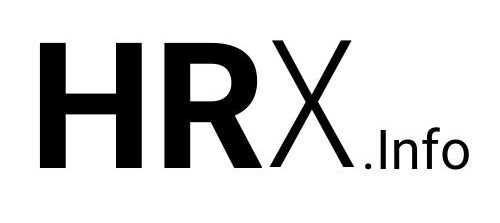In today’s competitive landscape, the path to success is paved with smart choices. A McKinsey & Company report reveals a stunning insight: businesses that rely on fact-based decisions are 23 times more likely to acquire new customers and 19 times more likely to boost profits.
Yet, a surprising paradox exists. Despite the clear advantages of analytics, a staggering 62% of executives admit to trusting their gut instinct over data for critical decisions. This raises a fundamental question for modern leaders: Should you lead with intuition or let the data decide?
At Oorwin, we believe the answer isn’t choosing a side but creating a powerful synergy between the two. This guide will explore the strengths and weaknesses of both gut feel and data analysis, helping you build a decision-making framework that drives superior business outcomes in 2025 and beyond.
The Decision-Making Dilemma: Why the Gut vs. Data Debate Matters in 2025
The clash between gut instinct and data-driven analysis isn’t just a theoretical debate; it’s a daily challenge in boardrooms worldwide. Research shows that 58% of companies base at least half of their regular decisions on intuition. In stark contrast, companies that embrace data are three times more likely to report significant improvements in their decision-making processes.
This discussion is more critical than ever as we navigate the data explosion of 2025. The world created an incredible 149 zettabytes of data last year, a figure projected to soar to 394 zettabytes by 2028. This presents a monumental opportunity, but only for those who can manage it. The gap is widening: top-performing companies base 60% of their decisions on analytics, while laggards still rely on instinct for 70% of their choices.
Relying exclusively on one method is risky:
- Gut decisions can be clouded by personal bias, emotion, and team inconsistencies.
- Purely data-driven approaches can lead to analysis paralysis and miss crucial human context.
The smartest path forward requires a blend of both.
The Case for Intuition: The Pros and Cons of Gut-Feel Decisions
Intuition is the brain’s innate pattern-recognition engine. It allows leaders to make swift, creative judgments. But this approach has clear limitations.
Advantages: Speed and Creativity
In fast-moving situations, intuition is invaluable. Crisis managers often rely on their gut for initial responses, turning to analysis only after the situation stabilizes. This speed allows for rapid, decisive action. Furthermore, intuition is a wellspring of creativity. Studies show that individuals with intuitive thinking styles generate more elegant, original, and innovative solutions.
Disadvantages: Bias, Emotion, and Scalability
The power of intuition is often undermined by its pitfalls:
- Cognitive Biases: Gut feelings are susceptible to confirmation bias (favoring existing beliefs), anchoring bias (over-relying on initial information), and hindsight bias (the “I-knew-it-all-along” effect).
- Emotional Interference: Anxiety and other emotions can systematically lead to poor choices. The satisfaction from a successful gut decision can reinforce trust in the method, even when outcomes are inconsistent.
- Team Incoordination: An intuition-based decision is difficult to justify to stakeholders. It creates alignment challenges when individual gut feelings clash, making it an inconsistent and unscalable model for a growing organization.
The Power of Data: Making Smarter, Evidence-Based Decisions
In 2025, data analysis is the bedrock of a reliable business strategy. To harness its power, you must move beyond simple data collection to a structured approach of confirming assumptions and avoiding analytical traps.
How to Use Data to Confirm Assumptions
Don’t let data analysis become a fishing expedition. Start with clear objectives tied to your strategic goals. Create an “assumptions-test table” that lists each hypothesis, your plan to test it, and the expected outcome. The best validation comes from combining multiple data sources, including qualitative information like customer feedback, which provides the “why” behind the numbers.
Steps to Centralize and Normalize Data
Centralized data ensures everyone works from a single source of truth. Follow these steps to organize your information effectively:
- Identify & Collect: Gather data that aligns with your objectives.
- Clean: Remove inconsistencies, duplicates, and errors.
- Standardize: Ensure all data follows predefined formatting rules.
- Organize: Structure your database for efficiency and easy access (e.g., using 2NF).
This process improves data integrity, saves storage, and supercharges your analysis capabilities.
Avoiding Data Tunnel Vision
Focusing too intently on a single data stream can cause you to miss the bigger picture. To avoid this, actively seek out diverse opinions and contradictory information. Always view your data within the broader context of your business environment and challenge your own assumptions to combat confirmation bias.
Oorwin’s Take: Finding the Optimal Balance
The most successful organizations don’t choose between gut and data—they integrate them. Our research indicates that companies using a hybrid approach are 19% more profitable than those that depend on only one method.
The “Confirm-then-Trust” Framework
We champion a “confirm-then-trust” method. Intuition sparks the initial idea or identifies a potential opportunity, but data is used to validate and refine it. This framework involves:
- Documenting instinctive theories.
- Designing targeted data collection to test the assumptions.
- Implementing solutions that incorporate both validated insights and experienced judgment.
Our findings suggest the optimal blend is giving 30% weight to experience-based intuition and 70% to quantitative analysis.
Tools to Support Hybrid Decision-Making
Modern platforms can bridge the gap between human judgment and algorithmic precision. Look for tools that:
- Visualize data to trigger intuitive pattern recognition.
- Allow users to stress-test assumptions with “what-if” scenarios.
- Incorporate collaborative features to capture diverse viewpoints.
How Oorwin Helps
We help teams build decision frameworks that clarify when to use a data-first approach versus when to lean on experience. Our clients have used this balanced model to reduce decision regret by 42% while making choices 37% faster.











